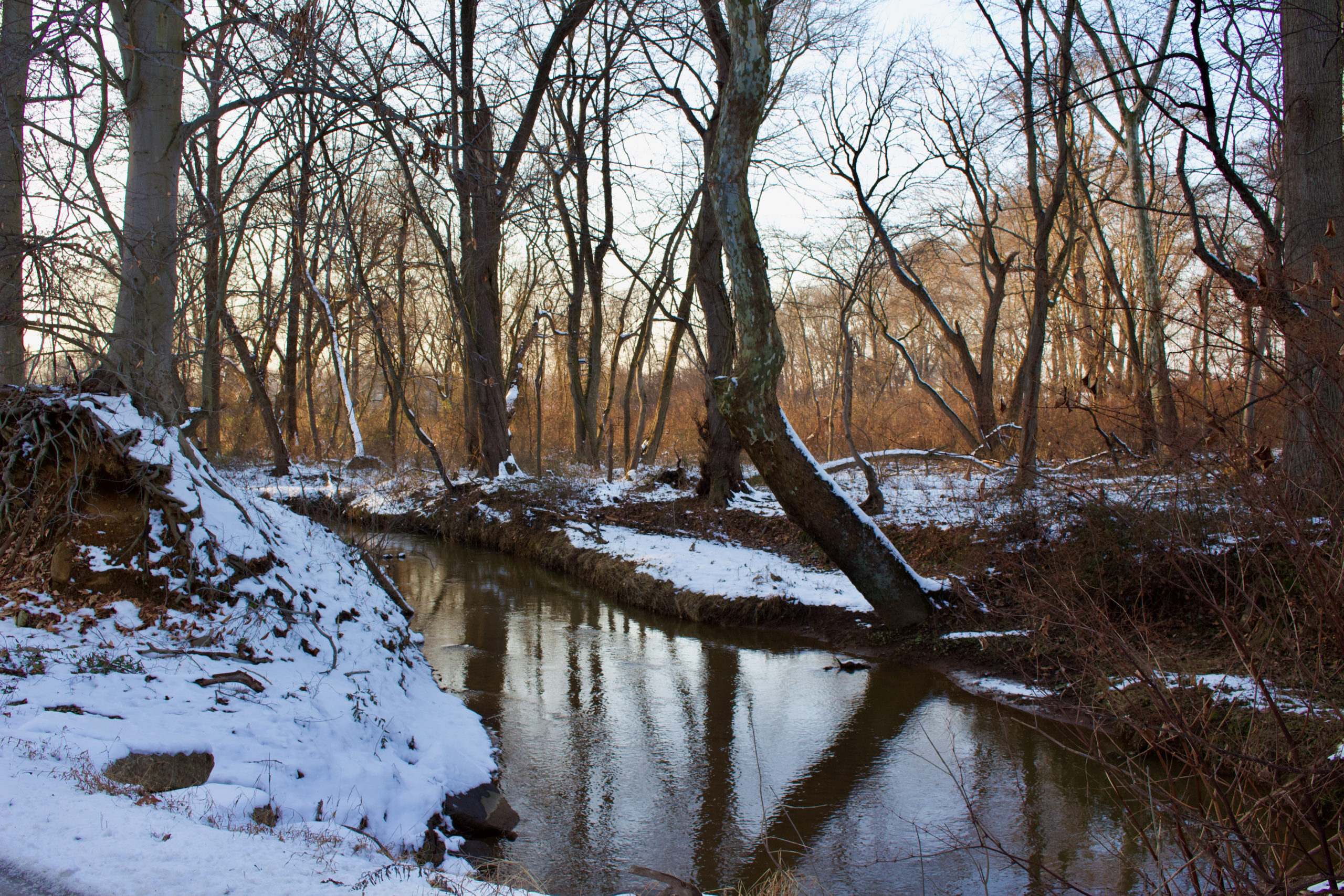Good or bad, snakeheads are a worthy game for any angler.
When biologists discovered a non-native fish in the tidal Potomac River in 2004, the news media didn’t spare a drop of sensationalism. Snakeheads were “loathsome,” “monsters” and “voracious.” One story even mentioned Armageddon, as if a mere fish could possibly alter the very course of humanity. Why not? Newspapers are businesses, and nothing sells like fear.
Hollywood even latched on to the hype. Movies like Snakehead Terror and Frankenfish portrayed snakeheads as saber-toothed beasts capable of wrecking boats, gobbling up swimmers and slithering into lakeside cabins before shredding teenagers into bloody bits.
Snakeheads don’t bite swimmers, of course, and they aren’t big enough to eat a child. The current world record, caught in a tributary of the tidal Potomac, weighed 17 pounds, 12 ounces. Nor can they walk across dry land. “Snakeheads can wiggle their way across flat ground for short distances,” says US Fish and Wildlife Service biologist Josh Newhard, but they don’t make long journeys with specific destinations. “They are somewhat unique in that they can breathe out of water, but they need to stay wet in order to survive,” he adds.
Hollywood and the media may have blurred the line between fact and fiction, but from a biological perspective, there were some valid concerns. Would a non-native fish with an appetite for anything that swims have a detrimental impact on such species as largemouth bass? It is a question biologists have been studying for over a decade. For Virginia Department of Game and Inland Fisheries biologist John Odenkirk, the answer remains unclear. However, he is far less concerned than he used to be.
So Far, So Good

“They seem to be occupying a niche that wasn’t occupied before. From what I’ve seen, they are not having a negative impact on largemouth bass or any other fish in the tidal Potomac River. Basically, they are just another fish,” Odenkirk says.
Maryland Department of Natural Resources tidal bass program manager Joe Love agrees in some ways. Although one study did show a significant decline in largemouth bass in the Potomac, that was based on computer modeling that did not account for angler harvest. So far, the river’s bass fishery remains healthy.
“Have they hurt the river? There is no simple answer,” says Love. “Fourteen years isn’t much time to fully understand their impact. They are continuing to expand their range in the Chesapeake Bay watershed, so things are still changing. There are still a lot of unknowns.”
What is known is that snakeheads eat juvenile bass, but bass eat juvenile snakeheads. In fact, largemouth bass make up just a small portion of snakeheads’ diets. Odenkirk has found everything from perch and crayfish to minnows and even other snakeheads in their stomachs. If it swims, they will eat it. “The Potomac is incredibly fertile, so there is no shortage of food,” says Odenkirk.
If their impact remains in doubt, one thing doesn’t—snakeheads are here to stay. Although their numbers are down in a few areas of the Potomac with heavy fishing pressure, they remain abundant in lots of places. Their range continues to expand, also, thanks in part to illegal stocking by thoughtless anglers. Since they were discovered in the Potomac in 2004, the fish have been found in tidal rivers across the Bay and in dozens of lakes and ponds in Virginia and Maryland. They are in New Jersey, Pennsylvania, North Carolina, Delaware and New York.
Some likely migrated from the Potomac up the Bay, where they found suitable habitat in the upper ends of tidal tributaries along the Western Shore. Snakeheads can tolerate moderate levels of salinity, according to Love.
“We also think they moved up the C&O Canal into the upper Potomac, but we also think they were illegally stocked in a lot of other places,” he says.

To Catch A Predator
For anglers like Jon Leavitt, how they got here is less important than the simple fact that snakeheads smash a surface lure with all the fury of a street brawl. Like so many other anglers intrigued by the idea of a new fishing opportunity, the 38-year-old Arlington resident simply wanted to see if he could catch one. When he finally did, it was love at first sight. Catch one yourself and you’ll understand. Their flanks vary from a steel-gray to a coppery green and are decorated with an intricate python-like pattern. Despite a mouth full of needle-sharp teeth, snakeheads are as beautiful as any fish in the Potomac.
“It took me four or five trips to figure them out because I was fishing for them like I fish for largemouth bass, which they aren’t,” he says. “One day a buddy and I each caught three. My biggest was 13 pounds. After that, I couldn’t get enough.”
That was in 2009. Leavitt has since developed a mild obsession with snakeheads, chasing them as many as four days a week during the peak season. To say he cracked the code might be a stretch, but Leavitt certainly has learned a few things since his first snakehead. He has had multiple 20-fish days, including one with six snakeheads over seven pounds. His biggest is 17 pounds, 6 ounces.
Rule Number One? Stealth. Snakeheads can be reckless, following and smashing a lure right next to the boat, but they aren’t stupid. The slightest noise can spook any fish within casting range. Leavitt fishes out of a Jackson kayak, which allows him to slide over and through thick vegetation without alerting the fish. “I can also get to places bass boats can’t. I think that’s really important. Snakeheads will go as far up into the vegetation as they can, even if it is less than a foot of water. A lot of the fish I catch are in places a boat can’t reach,” he says. “The fish that bass boats can reach get caught pretty quickly. They don’t last.”
Plenty do get caught from larger boats, of course. Leavitt figures snakeheads are most vulnerable to boat-bound anglers in the late spring and early summer before aquatic vegetation becomes too thick. May, June and July are his favorite months. As the summer lengthens, aquatic vegetation becomes too thick to sight-fish for them, although Leavitt still catches them into September.
“It gets to a point in late August and into September where they become difficult to find and catch because there is so much thick grass. They just bury themselves in the hydrilla. I think they either can’t see a lure or hear it as well, so I don’t catch as many,” he says.
No matter when you fish for them, be prepared. It’s not as much of a fight as it is a wrestling match. Snakeheads don’t jump and unless they are hooked in open water, they often don’t make line-stripping runs. Instead, they bury themselves deep in the aquatic vegetation where they live, wrapping themselves, your lure and line in a mass of grass, pads and anything else they can. That’s why hardcore snakehead anglers like Leavitt load their reels with 30- or even 60-pound braided line instead of heavy monofilament. “They have bony mouths, so you need a line that doesn’t stretch to get a good, solid hook set. Braid also helps cut through the vegetation better than mono. You need that when you try to land them,” he says. “You also need a net. I use mine to dig through the grass as much as I use it to actually land the fish.”

He favors 6-foot, 6-inch (or longer) medium-heavy bass rods in part because they allow for longer casts and because Leavitt usually fishes from a kayak. The longer rod allows him to work his baits better through the thick cover typical of snakehead habitat.
Almost any lure will work. Snakeheads aren’t particularly choosy. However, weedless lures that make lots of noise are a good bet.
“One of my favorite baits is a Stanley Ribbit Frog rigged on a 5/0 wide-gap hook. It makes a lot of noise and leaves a good bubble trail. It’s almost like a buzzbait,” says Leavitt. “If I see the wake of a fish following my bait, I can stop the lure and let it sink right in front of it.”
Chatterbaits are good over submerged grass and along the edges of spatterdock and grass beds. Hollow-body frogs are excellent baits, too. Leavitt tends to avoid lures with treble hooks because the cover is usually too thick, but also because most treble hooks are too weak to withstand the power of a snakehead combined with the added weight of the grass.
What he uses is somewhat less important than where and how he uses it. Snakeheads will hold on the outside edge of grass beds and stands of emergent aquatic vegetation, but they will move as far in as they possibly can on a high tide. Follow them. When the grass seems too thick or too shallow to hold anything larger than a minnow, go farther. “I catch them in places I would never have thought they would be,” notes Leavitt.
As the tide ebbs, those fish will move back out, but they don’t come all the way out of the pads or grass if they don’t have to. They can hide in mere inches of water. Make long casts and cover lots of water, making sure your lure creates plenty of commotion. Snakeheads aren’t just sight feeders. They rely on keen senses to feel vibrations. Fish that are buried under a dense hydrilla bed will explode through the grass as your lure passes overhead. Don’t set the hook, though, at least not when you see that strike.
“It’s tough to avoid setting the hook when you see a fish blow up on your lure, but you’ll pull your lure away from it. I missed a lot of fish until I learned to pause for a second before setting the hook,” says Leavitt. “If you miss a fish or spook one, make a note of that spot and come back in 15 minutes. There’s a good chance that fish will be there again.”

What is Next?
Those explosive strikes and gritty wrestling matches are just one reason snakeheads are growing in popularity. For some people, there is an entirely different reason to catch them. Brought to the United States from Asia as a food source, snakeheads are indeed outstanding table fare. All of those, along with the challenge of catching a new species of fish, have led to a massive surge in angling pressure.
That’s why Leavitt and a growing number of hardcore snakehead anglers would like to see either a creel or size limit placed on them. Why not? Interest in snakehead fishing has spawned an entirely new niche of sport anglers and even a commercial fishing market. Love says commercial fishermen caught 4,300 pounds of snakeheads from the tidal Potomac alone in 2016.
A change in status is unlikely to happen, at least in the foreseeable future. Despite their increased popularity among recreational anglers,snakeheads remain a politically touchy topic.
“There is no reason right now to protect them. They are prolific breeders and their numbers and range continue to increase. Any new regulations require a lengthy process that includes stock assessments, public input meetings and input from federal and other state agencies,” says Love. “The bottom line is they are non-native and invasive. We don’t want them, and we don’t want to encourage anglers to stock them in new waters.”
That doesn’t mean you can’t have fun catching them where they already exist. It’s perfectly legal to return the
fish back into the very water it came from, or better yet, take it home to the grill.




